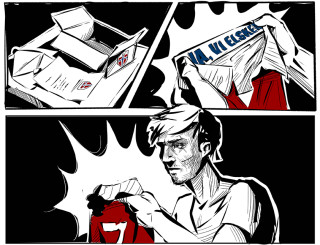Conference paper
Introducing Graphic Experiential Evidencing (GEE). How can the use of graphic novel fill a gap in the service design toolkit for communicating experience and emotion?

With an increasing focus on experience-centric services, where deeper customer connection is to be achieved by heightened dramaturgy and emotional engagement, service design must ensure it has tools that can model and communicate these experiences during service development.
Existing methods of visualizing services such as the Service Blueprint, whilst good for modeling the structure of experience delivery, do not convey the richness of the experiences itself.
Graphic Experiential Evidencing (GEE) has been developed through a process of research by design during a design intervention for the improvement of stadium football experience, when existing service design visualization tools were found lacking for the communicating of the designed experience to stakeholders.
This paper describes work in progress that adapts the graphic novel as a way to aid in the conveying of desired ‘on brand’ experience and desired emotional response in context.
Interviews with those involved in the project as well as other service designers suggest that using GEE in combination with existing service design tools offers great promise. Results show that the technique gives the service designer new ways to deliver an experience sample and communicate projected experiences and emotion to clients during the development of new services.

